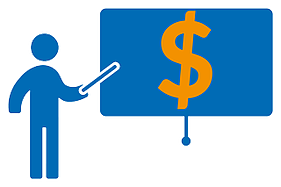
Price is important; there’s no doubt about it. For an emerging beverage brand, a mistake in pricing can cause a loss in sales. Price is one of the key indicators of a product’s value to a first-time customer and can dissuade potential customers from purchasing if it does not align with their expectations. When creating your retail execution strategy, you should to consider a pricing strategy first in order to effectively build your beverage brand.
1. Channel Pricing
If you look at the different channels that you are selling through, are there significant differences between the locations? Different locations often cater to radically different customers, so it is important to pull data from each of the locations and analyze accordingly. You can then adjust the price to fit each channel. For example, if your beverage is located in a gym, you can price it higher because thirsty gym-goers will be more likely to buy it, regardless of the price. If your beverage is located in a grocery store, you may want to price it lower so it will be more competitive against existing brands.
2. Price Skimming
The goal of price skimming is to rapidly obtain a large profit by setting an artificially high price. This can be dangerous for emerging brands because it may deter customers from purchasing. It is safer for established brands because they already have a customer following. However, if your beverage product is a health food product like kombucha or chia juice, you may be able to use price skimming because it creates an image of quality. The customers who purchase products in the health food sector tend to be willing to pay a higher price for better quality. If your beverage is unique and there are few competitors and/or substitutes for it on the market, then price skimming may work for you as well.
3. Penetration Pricing
Penetration pricing is the opposite of price skimming- the goal here is to quickly gain a large market share by setting a very low price for new products. After the business has established a big enough customer base, it gradually increases the price until it makes sufficient profits. Businesses use this strategy to edge out competitors, and if you don’t mind sacrificing profits for market share, it may be a good strategy. The low price will entice customers to purchase your beverage instead of your competitors’, and once you have developed strong customer loyalty, you can raise prices and generate profit.
4. Promotional Pricing
Coca-Cola uses promotional pricing quite often, giving discounts on certain products for a short period of time. This is beneficial because it allows them to increase sales on a certain product without the risks associated with penetration pricing.
5. Multiple Pricing
In multiple pricing, items are priced so that those who buy greater quantities get a slight discount, thus encouraging the sale of more items. For example, if you offer a bottle of your product at $1, a 6-pack at $5, and a 12-pack at $8.50, customers see that it is cheaper to buy a bigger pack. This boosts both sales and revenue as customers pay more for the single item than they usually would, increasing revenue, or they buy the bigger pack, increasing sales.
Ultimately, pricing is dependent on the customer’s willingness to pay - if they are not willing to pay the price, then your product will not sell. Price is a key factor in an emerging beverage brand’s path to success, and consequently, pricing strategies should be one of the first steps for managers and business owners to take before implementing a retail execution strategy.



